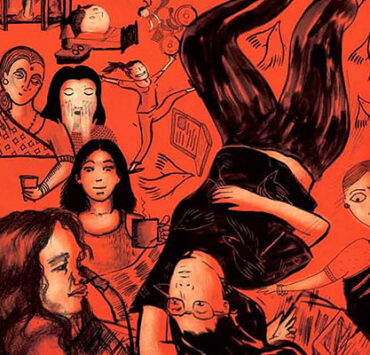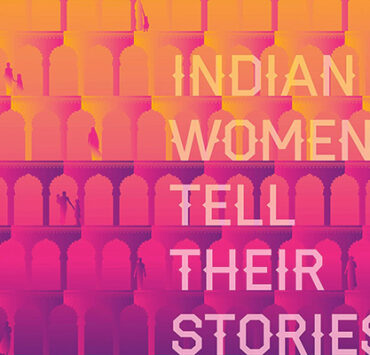Chaitanya Tamhane’s acclaimed film Court is a study in how people present themselves to the world, despite their internal rumbles and ruminations, and there can be no better site for this than the courtroom.
The film’s pivotal character is Narayan Kamble (played by Vira Sathidar), a Dalit poet and folk singer who is accused of writing a song that incited a manhole worker Vasudev Pawar to commit suicide. Kamble is seemingly the hero of the film, not because he gets the maximum attention within the text of the film, but precisely because he is spared the long-shot gaze of mundane dailiness.
I’m quite fond of and even happy with the overuse of the long and wide shot in films. My conversion to the long shot was largely assisted by being put to sleep by Theo Angelopoulous’s trilogy of films while watching them at I.F.F.I. Goa, admittedly lulled also by beer and fish thaalis. With my toes covered with the mandatory shawl that must be carried to all film festivals to combat the continuous blow of air-conditioning through the day, I had dozed off while looking at a long shot of a man walking towards a village surrounded by few naked trees and some cattle. When I woke up, I was marginally closer to him and he was slightly closer to his destination and it was the same long shot. These are my reasons for loving protracted and slow and tedious movies. In contrast, Court is almost like Mission Impossible—if you fall asleep or got distracted during the film, you’re likely to miss some major action.

A still from Chaitanya Tamhane’s Court.
There is one extraneous shot in Court that unbalances an otherwise symmetrical film. The shot is of its other main protagonist—the lawyer fighting Kamble’s case and patiently dealing with the cranky judicial system. He is assaulted because he insults a community of people when attempting to defend his client of possessing a banned book called Goymar Manas (whether this is a reference to a fictional Goymari community or the real Gowari community is unclear). His face is blackened by two men while walking on the road with his parents and sister. In a film where there has been not much interiority or even solitude, where the screen is always extended outward as if to invite the viewer to observe social context, to see the structural vicissitudes of any moment—there is one peculiar shot of the lawyer shirtless and weeping in his bedroom. The moment is jarring—it is intimate, but feels wrong within the structure of the film. If we had gone from seeing or rather hearing the assault on the lawyer as he is grabbed and his face blackened to the next shot of him getting a steam facial in a fancy salon, I can imagine that I would have uncontrollably snorted at the ridiculously pompous and conflicted figure of the social justice lawyer. Maybe the director did not want to make a funny film, which is a bit disappointing because essentially humans are ludicrous—especially when they are overly concerned with the way things appear, as if others are constantly and attentively watching (and thumbs-up liking).
Through the film I got the sense that we were being denied a fiery speech from Kamble that would brush aside all the paper-pushing pedantic legalese and tell us clearly why Pawar died in the manhole. The lawyer makes an obscure reference to the ancient Halsbury’s Laws of England and is unable to address manual scavenging or even directly talk to the prosecuting lawyer or the judge. I suspect that Kamble would possibly crush them with his knowledge of even the laws for manual scavenging and directly shame them as to why Pawar was still doing this work, and who in this courtroom was actually and actively responsible for his death. Instead, the circumscribed nature of speech within a courtroom or perhaps even the limits of what a film can or can’t show without upsetting its own economies—or for whatever reason—we only see Kamble’s dumbfounded defiance when he says “Not yet” when asked whether he had written a song that could incite manual scavengers to commit suicide by climbing down manholes.
Court is a surprising entry for the Oscars—it defies many populist expectations for an Oscar-worthy film, but fits perfectly into the genre of the ‘festival film’ (from Cannes to Venice). The Kafkaesque courtroom scenes (and boy, do film festivals love Kafkaesque scenes) are a string of banal cases involving ordinary people that are heard and dismissed with no real recognition that lives are being affected by this dusty roll call. As a failed lawyer myself, I shuddered at how perfectly this film captures the thick soup of boredom and nullity in a courtroom. In fact the film could have just been an uninterrupted take of what happens in Indian courts, going from Kamble’s case to that of a Mercy Fernandes who dared to come to court in a sleeveless top to whosoever comes next. We don’t really learn much from the digressions that follow the lives of particular people outside the courtroom. The woman lawyer, who is the prosecutor, is also taking care of her diabetic husband and is benevolently enslaved in her own home; the social justice lawyer is a jerk who can’t really be friends with a young Dalit boy, and of course, is entirely too lame to hook up even if he meets the kind of girls that will pick up a lullaby from a 10-day trip to Brazil and then perform it at bars. The judge is a beacon of rationalism and sound reason who recommends Hessonite gemstones for deaf boys and probably only goes to restaurants that serve sattvic and homely food.
Some of the most astute moments in Court occur when the film looks back at its audience—whether it is through the sea of humanity that is watching a chauvinist Marathi play, the people waiting for their cases to be heard in a courtroom, or the motley crew that has gathered for a meeting on litigation and social justice. At this particular meeting there is a banner with the words ‘Dissecting Democracy’, and every variation of the jholawalla activist or concerned liberal is present—the enthusiastic college students at the back of the room, the bored videographers, the attractive bespectacled female activist, the bearded men of various ages, one or two mandatory white people, and so on. Effortlessly, this wide and deep shot captures the ennui-soaked tale of India’s progressives.








